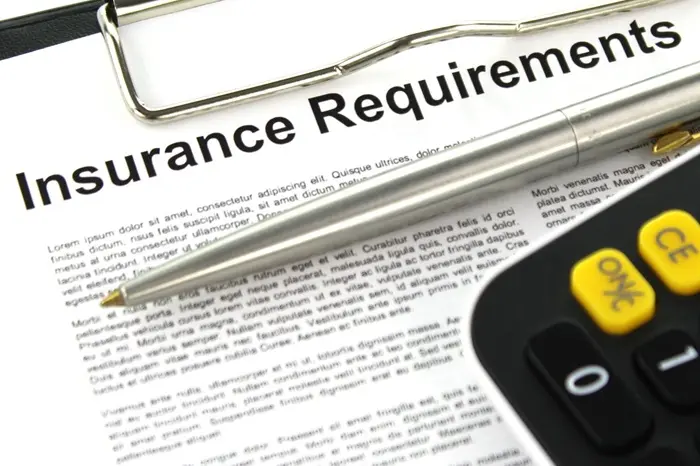Professional liability insurance, also known as errors and omissions (E&O) insurance, is a critical coverage for professionals across various industries. It protects businesses and individuals against claims of negligence, errors, or omissions in their professional services. The cost of this insurance can vary significantly depending on several factors, and understanding these factors is essential for businesses seeking to mitigate risks. This article will explore the typical costs associated with professional liability insurance, the key factors influencing these costs, and how businesses can manage their insurance expenses effectively.
What Is Professional Liability Insurance?
Before diving into the cost, it’s crucial to understand what professional liability insurance entails. Professional liability insurance covers legal fees, settlements, and other costs associated with lawsuits or claims made by clients. These claims often involve accusations of inadequate work, mistakes, or failure to deliver promised services.
Who Needs Professional Liability Insurance?
Professional liability insurance is essential for businesses or individuals providing expert advice or services. Industries that commonly require this type of insurance include:
Legal professionals: Lawyers, paralegals, and law firms
Medical professionals: Doctors, nurses, and healthcare providers
Consultants: Business and management consultants
Financial professionals: Accountants, auditors, and financial advisors
IT specialists: Software developers, cybersecurity professionals
Real estate agents: Brokers and property managers
In many cases, clients or industry regulations mandate professional liability insurance before they hire professionals.
Average Cost of Professional Liability Insurance
The cost of professional liability insurance can vary widely depending on the profession, the size of the business, and the level of risk involved. On average, small businesses in low-risk industries might pay between $500 to $1,000 per year for coverage, while larger companies or those in high-risk industries can pay significantly more—upwards of $5,000 to $15,000 annually or even higher.
Small Businesses and Freelancers
For small businesses and independent contractors, the cost of professional liability insurance tends to be lower. In industries with lower risk, such as marketing or consulting, premiums may range from $400 to $1,000 per year. Freelancers can expect to pay at the lower end of this range, with some policies costing as little as $250 annually for basic coverage.
Mid-Sized Businesses
Businesses with more employees or higher revenue typically face higher premiums. A mid-sized company in a field like IT or engineering might pay between $1,500 to $5,000 per year. This reflects the greater potential liability exposure and the need for more comprehensive coverage.
High-Risk Industries
Companies in high-risk professions, such as medical practices, law firms, or architectural firms, can see significantly higher premiums. Medical professionals, for example, might pay anywhere from $5,000 to $50,000 annually, depending on their specialty and the size of their practice. Surgeons and specialists, who face more significant malpractice risks, often pay at the higher end of the spectrum.
Factors That Influence Professional Liability Insurance Costs
The cost of professional liability insurance is influenced by several factors, each of which can either increase or decrease the premium. Below are some of the primary considerations insurers use to determine costs.
1. Industry and Profession
The profession or industry you are in plays a significant role in determining insurance costs. Industries with higher risk levels, such as healthcare or law, typically face higher premiums due to the greater likelihood of lawsuits or claims. For example, a surgeon is likely to pay more for professional liability insurance than a graphic designer because the potential consequences of an error in surgery are far more severe.
2. Business Size and Revenue
The size of the business and its revenue are critical factors in insurance costs. Larger businesses with higher revenue are generally seen as having more exposure to liability, leading to higher premiums. Additionally, a business with more employees increases the chances of an error, resulting in higher risk for the insurer.
3. Coverage Limits
The amount of coverage a business needs directly impacts the premium. Most policies offer coverage limits, which represent the maximum amount the insurer will pay out for a claim. For example, a policy with a $1 million per claim limit and a $2 million aggregate limit will cost less than a policy with higher limits. Businesses in high-risk industries often require higher coverage limits, driving up their costs.
4. Claims History
A business’s claims history can significantly affect the cost of professional liability insurance. Companies with a history of multiple claims are seen as riskier and may face higher premiums. Conversely, businesses with a clean claims history may qualify for lower rates.
5. Geographic Location
Where a business operates also influences insurance premiums. Certain regions or states may have higher litigation rates, increasing the likelihood of claims and, thus, raising the cost of insurance. For instance, businesses operating in highly litigious states like California or New York often face higher premiums.
6. Policy Features
The specific features and add-ons a business includes in its professional liability policy can also affect costs. For instance, businesses can choose policies that cover prior acts, which protects them against claims related to services provided before the policy was in place. These additional features typically increase the premium.
See Also: How to Bill Insurance as a Health Coach
Reducing Professional Liability Insurance Costs
While professional liability insurance is essential for many businesses, there are several strategies businesses can use to manage and potentially reduce their insurance costs.
1. Shop Around for Quotes
One of the most effective ways to reduce the cost of professional liability insurance is by comparing quotes from multiple insurers. Different providers assess risk differently, so prices can vary significantly. Working with an insurance broker can also help businesses find the best deal.
2. Increase the Deductible
Opting for a higher deductible can help lower the premium. The deductible is the amount a business must pay out-of-pocket before the insurance kicks in. While this increases the business’s financial responsibility in the event of a claim, it can lead to lower annual premiums.
3. Improve Risk Management
Implementing robust risk management practices can reduce the likelihood of errors or claims, leading to lower insurance costs. For example, businesses can provide training for employees, implement quality control procedures, and maintain clear communication with clients to prevent misunderstandings.
4. Bundle Insurance Policies
Some insurers offer discounts for businesses that bundle multiple types of insurance policies, such as general liability and professional liability. This can be a cost-effective way to secure comprehensive coverage while saving on premiums.
5. Maintain a Clean Claims Record
As mentioned earlier, a business’s claims history plays a significant role in determining insurance costs. By maintaining a clean record and avoiding claims, businesses can demonstrate to insurers that they are low-risk, potentially qualifying for lower premiums over time.
Understanding Policy Exclusions and Limitations
When purchasing professional liability insurance, it’s crucial to understand the exclusions and limitations of the policy. These are specific situations or claims that the policy will not cover. Common exclusions include:
Intentional acts: Claims resulting from intentional wrongdoing or fraud are not covered.
Bodily injury or property damage: Professional liability insurance generally does not cover claims of bodily injury or property damage; these are typically covered under general liability insurance.
Cyber liability: Claims related to data breaches or cyberattacks may not be covered under a standard professional liability policy. Businesses in high-risk industries might need a separate cyber liability policy.
Understanding these exclusions is essential to ensure a business has the appropriate coverage for its needs.
Conclusion
Professional liability insurance is a crucial form of protection for businesses and professionals across a wide range of industries. The cost of this insurance depends on various factors, including the industry, business size, claims history, and coverage limits. While prices can vary, small businesses in low-risk industries may pay as little as $500 per year, while businesses in high-risk professions can face premiums exceeding $50,000 annually.
By understanding the factors that influence costs and implementing strategies such as comparing quotes, increasing deductibles, and improving risk management, businesses can effectively manage their insurance expenses. Investing in professional liability insurance provides peace of mind and financial protection, ensuring that businesses are prepared for potential claims and lawsuits.
[inline_related_posts title=”You Might Be Interested In” title_align=”left” style=”list” number=”3″ align=”none” ids=”3467,3470,3381″ by=”categories” orderby=”rand” order=”DESC” hide_thumb=”no” thumb_right=”no” views=”no” date=”yes” grid_columns=”2″ post_type=”” tax=””]

































